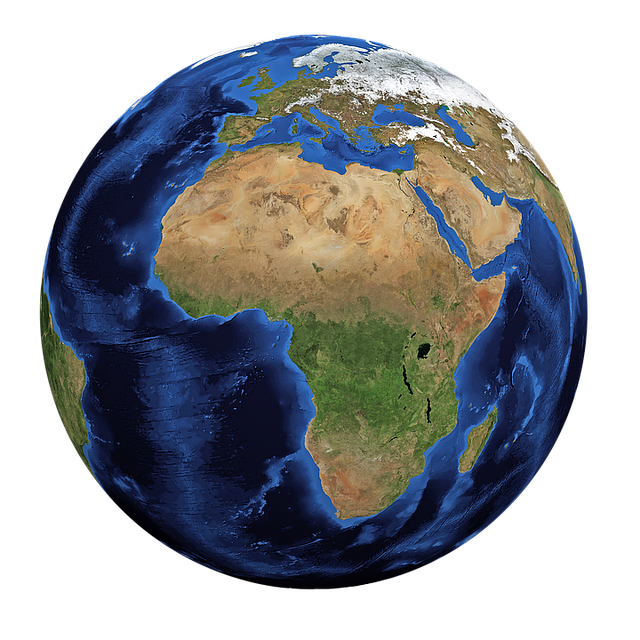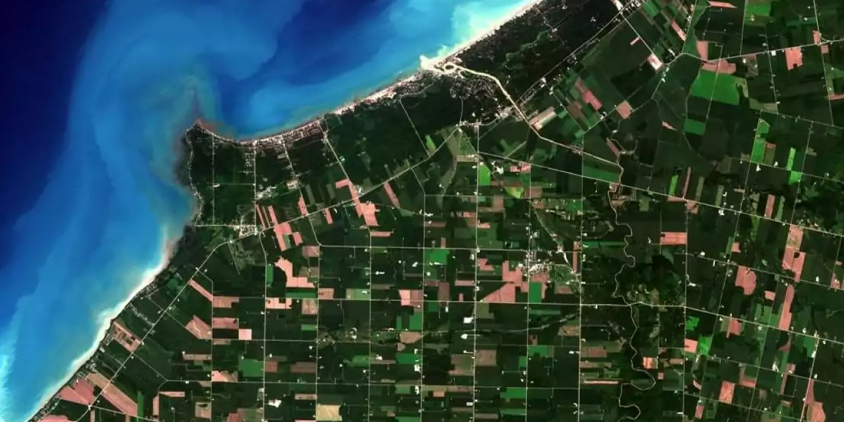विश्व का एक दृश्य

अशोक मिश्र द्वारा
जब मैं पहली बार अंतरिक्ष में गया, तो मुझे अंतरिक्ष की काली मखमली पृष्ठभूमि पर एक सुंदर, झालरदार नीला जिम देखने की उम्मीद थी। पृथ्वी की वह छवि – बादलों के सफेद भंवरों में लिपटे एक छोटे नीले संगमरमर की असाधारण, शक्तिशाली छवि – 1970 के दशक में पर्यावरण आंदोलन का प्रतीक बन गई।
यह जीवित चीजों के लिए एक निष्क्रिय शक्ति के रूप में हमारे ग्रह की मेरी मानसिक तस्वीर थी जिसे मानव-प्रेरित क्षति और गिरावट से सुरक्षा की आवश्यकता थी। और यह बिल्कुल वैसा नहीं था जैसा मैंने देखा था। वास्तव में, मैं उस खूबसूरत और गतिशील ग्रह की पहली झलक के लिए पूरी तरह से तैयार नहीं था जिसे हम घर कहते हैं।
लगभग दर्दनाक रूप से चमकीली, जिस पृथ्वी को मैंने देखा, उसकी अपनी प्राकृतिक प्रक्रिया के प्रचुर सबूतों की तुलना में मानव गतिविधि के बहुत कम सबूत दिखे। जब शटल दिन का प्रकाश महासागरों के ऊपर से गुजरता है, हम महासागरों की मंथन गति को देख सकते हैं, जो पानी पर सूर्य के प्रतिबिंब में दिखाई देता है, जो पृथ्वी की सतह के 70% हिस्से को कवर करने वाले अशांत पानी में अपार ऊर्जा का प्रमाण है।
हम पृथ्वी पर सबसे ऊंची पर्वत श्रृंखला हिमालय को स्पष्ट रूप से अलग कर सकते हैं, जो भारतीय उपमहाद्वीप और एशियाई महाद्वीपों के बीच चल रहे टकराव को साबित करता है। कक्षा से, इसकी चोटियाँ झुर्रीदार, टेढ़े-मेढ़े कागज़ जैसी दिखती हैं। ज्वालामुखी पृथ्वी पर सबसे छोटे दाने के रूप में दिखाई देते हैं।
ALSO READ: LSG vs. PBKS Match 11; IPL 2024: Lucknow Batting First, Nicholas Pooran Wins Toss
कल्पना कीजिए कि पृथ्वी की नई परत के निरंतर निर्माण में होने वाली हलचल, मोड़ने, उठाने और पिघलने में कितनी ऊर्जा शामिल है! मैंने एक नाजुक ग्रह नहीं देखा, बल्कि एक जीवित, सांस लेती, शक्तिशाली पृथ्वी देखी।

पृथ्वी के रात्रि पक्ष ने मुझे एक अलग दृष्टिकोण दिया। रात्रि में कक्षा में प्रवेश करने पर, मानव गतिविधि के साक्ष्य प्रचुर मात्रा में स्पष्ट होते हैं। घनी आबादी वाले भूभाग या निर्मित इमारतें, जबकि आवास रेगिस्तान में विरल, लगभग पूर्ण अंधकार होता है। प्रकाश की रूपरेखा सामग्री, विशेष रूप से उत्तरी गोलार्ध में, जहां लोग समुद्र तट के किनारे रहते हैं, रोशनी की एक श्रृंखला से रोशन होती है, और कुछ स्थानों पर, राजमार्ग घनी आबादी वाले हैं, और शहर लगभग इन सभी परिवहन धमनियों के साथ विकसित हुए हैं।
इस सबने यह स्पष्ट रूप से स्पष्ट कर दिया कि जहां लोगों ने रहने के लिए चुना है वहां भूगोल और जलवायु का कितना प्रभाव है। और यह मुझे चौंकाता है कि इन उल्लेखनीय, व्यापक पुस्तकों में ग्रह के बारे में वही, भिन्न-भिन्न विचार समाहित हैं: शक्तिशाली पृथ्वी काफी हद तक अपने मानव आवासों और मानवीय गतिविधियों के साथ विकसित हो रही आकर्षक दुनिया से प्रभावित है।
मैं एक ज़ूम लेंस के माध्यम से देखने की कल्पना करता हूं, जिसकी शुरुआत पृथ्वी और ब्रह्मांड के विस्तृत क्षेत्र से होती है, और फिर पृथ्वी के निवासियों के एक माइक्रोस्कोप दृश्य पर ज़ूम करके और कैसे उन्होंने वहां की आवश्यकताओं के अनुरूप अपने परिवेश को संशोधित किया हैI

यह लेख ब्रह्मांड में केवल एक ग्रह के रूप में पृथ्वी का व्यापक संभव दृष्टिकोण प्रस्तुत करता है, जो हमारी प्रजातियों की पृथकता और महत्व को पुष्ट करता है। पृथ्वी पर प्रकृति के फोकस और विविधता पर अध्याय के माध्यम से प्रगति में विस्तार से विस्तार, विस्तार से विस्तार, और फिर हमारे मानव परिवार, संस्कृति और इतिहास चित्रकला की उल्लेखनीय दृश्य कहानी पर अध्याय एक संपीड़ित चित्रों की खोज करता हैI
यह राष्ट्रीय भूगोल की उत्तर पुस्तिका हमें ज्ञान के प्रति हमारी स्थायी प्यास की याद दिलाती है, जो विशिष्ट मानवीय खोज है जो हजारों वर्षों के दौरान समय और प्रौद्योगिकी में अद्भुत हलचल लेकर आई है जब हम वायुमंडल से बाहर उड़ सकते हैं, ऊपर से पृथ्वी को देख सकते हैं, और इस सुंदर को देखकर आश्चर्यचकित हो सकते हैं।
पृथ्वी पर इसकी सबसे प्रारंभिक उपस्थिति के बाद से, मानव ने अपने परिवेश को समझने की कोशिश की है। जीवित रहना ज्वालामुखी के व्यवहार, नदी के बाढ़ चक्र, या पहाड़ी दर्रे को पार करने के इष्टतम समय को समझने पर निर्भर था, और मनुष्यों ने ऐसी जानकारी को रिकॉर्ड करने और प्रसारित करने के तरीके विकसित किए। जैसे-जैसे वे अपने मूल स्थानों से जमीन और समुद्र के रास्ते आगे बढ़े, उन्होंने पृथ्वी की प्रक्रियाओं और दुनिया भर में मानव बसावट के पैटर्न और प्रभावों का व्यापक परिप्रेक्ष्य प्राप्त किया।
MORE READ: Free Satellite Imagery Sources: Zoom In Our Planet






